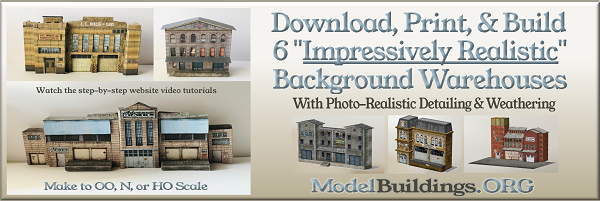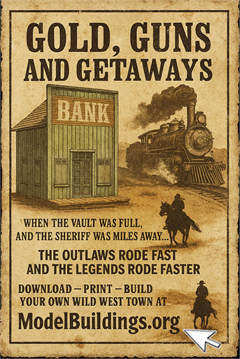Everything on model trains, model railroads, model railways, locomotives, model train layouts, scenery, wiring, DCC and more. Enjoy the world's best hobby... model railroading!
What’s the Correct Track Spacing on Straights and Curves?
Lincoln sent in this question:
“I was wondering what is the correct spacing width between parallel straight tracks (HO), and does this differ from on curves? I presume curve spacing is different depending on the curve radius? I want to run some long freight trains and I am looking at buying some long passenger cars, so I want to have enough space between the tracks. Thanks in advance for publishing my question, and to any rail fans who can help out.”
7 Responses to What’s the Correct Track Spacing on Straights and Curves?
Leave a Reply















If I recall correctly, the recommended spacing is about 2 inches, center to center. For curved tracks that has to go up to around 3 inches, depending on the radius of the curves. The length of the train doesn’t matter; the length of the cars does. Passenger cars are generally the longest cars and will usually have the most trouble on curves if the adjacent track is too close and occupied.
If you are just planning the layout, try to determine the longest cars/locomotives you plan on using and design the track plan for curves broad enough for them. A 60 foot car may look and work fine on a 18 inch radius while an 85 foot car will likely have problems on anything less than 26-28 inch radius.
What Dale says is very true. I set my spacing close to the 3 inches on the curves due to the steam loco’s cow catchers extend close to an inch outward(measure from center of the track to the edge of the cow catcher). Any object closer to that would be struck—scenery, extensions from oncoming trains etc. I never measured it but might be relevant to any track radius.
also many people change the couplers away from truck mounted (Talco style) to body mounted. there are some special gear boxes from Kadee and others that allow more wide pivoting of the coupler but are a solid connection to the body. Also the three point suspension, with one truck screw almost snug and the other loose to allow some sway is important when going around a curve. A little super elevation of the track helps and looks good too (a sliver of styreen under the outside edge of the track does this)
Precise recommendations for track spacing are described in following NEM norms:
NEM 102 , NEM 103, NEM 111 and NEM 112.
You will find all necessary information for all scales, track radius and car length there.
All norms are published on MOROP website.
I use 2.25 on curves. I have 36 down to 32″ rad. curves with no problems from scale length cars and DD’s
It depends on the radius of the curve, the width of the car and the distance between the bogie pivots and the ends of the car (on the inner track) and the distance between the bogie pivots on the outer track. There is no real hard and fast rule for all stock on all track. One way of determining how far apart tracks should be is to lay them temporarily on a sheet of plywood or card at the anticipated radii and separation and to follow the paths of the ends and middles of various items of your stock with a fine pencil attached to them and contacting the wood or card.
To ensure trains down “rub shoulders on curves, put the first rail down and get your longest piece of rolling stock and tape a soft pencil to one corner. Then run it along the rail making a mark. Now tape the pencil to the centre of the rolling stock and do it again. You will notice that this mark has a different course.
The marks show what would happen if the adjoining rail was too close – the corner of your wagon would hit wagons on the other track. So using commonsense move one or both apart.